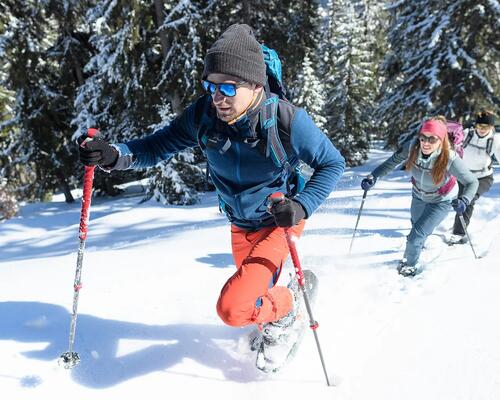
What's the best way to get kitted out for winter hiking?
I imagine you have already experienced cold feet when out winter hiking. Did you know you can keep warm with a few gear adjustments? If you follow the tips shared by Louise, Footwear Product Manager, you'll no longer need fear the cold!
Grip and support are the two main criteria, not forgetting thermal insulation and waterproofing. It's all the more true in the winter! Louise Chekroun, our Footwear Product Manager, is ready to share her tips for hiking in all weather. Grip and support are the two main criteria, not forgetting thermal insulation and waterproofing.
Expectations for grip differ in summer and winter. In winter, snow and ice increase your chances of slipping. So you need properly designed spikes. Quechua has developed specific technology called "Snowcontact". The components and design of this sole have been optimised to ensure an excellent grip and traction whatever the type of terrain you are hiking through. These soles will be more effective than classic models, especially in the snow.
Your body's extremities need to stay properly warm when hiking in winter to remain comfortable. Feet can get cold very quickly, making it painful to walk. I suggest getting warm shoes.
Find out about the temperature thresholds for your footwear. We have established these indicators using tests to measure how cold you feel both in the lab and on the trails.
And of course, waterproofing is important, because your feet need to stay dry in order to stay warm! We conduct two types of test to check footwear waterproofing. First, we plunge them in water beneath pressurised air to check that there are no air bubbles on the surface. We then fit them to a robot that simulates walking and half immerse them. We use this test to make sure the shoes remain dry on the inside, even when moving!
Once you have found the right footwear, I suggest wearing three separate layers of clothing to keep warm without sacrificing breathability.
Start with a first layer against your skin that's both breathable and warm, a second layer in either fleece, down or feathers, to insulate from the cold, and a third layer to protect you from the wind and rain.
Now you're kitted out properly to enjoy the beauty of snow-capped mountains!


